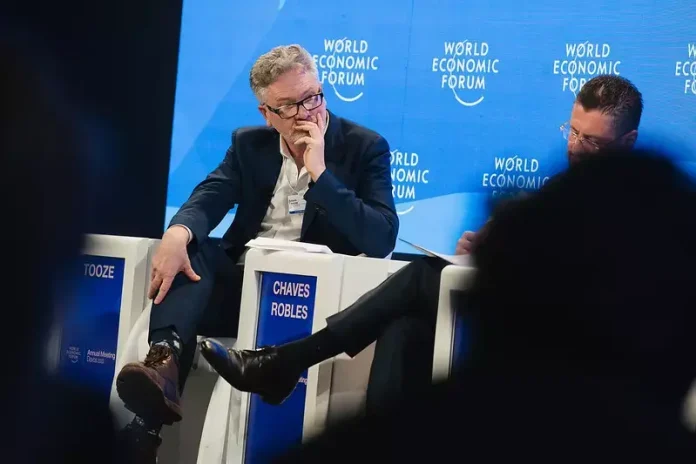Is globalization dying? An economic historian weighs up the evidence
By Stéphanie Thomson, World Economic Forum
- Commentators have forecast the globalization’s collapse for years.
- Data shows, however, that globalization has survived and adapted in the face of financial crises and health emergencies.
- Speaking at a Forum meeting in China this June, historian Adam Tooze shared some ideas on where this sense of fragility comes from — and what it might mean for the future of globalization.
For decades now, commentators have been predicting that the end of globalization is nigh, pointing at evidence like the de facto paralysis of the World Trade Organization since 2008. In spite of all the talk of its imminent demise, globalization has continued to plod on, surviving and adapting in the face of financial crises, political instability and global health emergencies.
Where does this idea that globalization is fragile — maybe even at breaking point — come from? That’s the question that Adam Tooze, a historian and professor at Columbia University, set out to answer in a session at the Annual Meeting of the New Champions, or the World Economic Forum’s “Summer Davos”, this past June. “My aim here,” he told the audience, “is to run through a list of anxieties and see if we can find a different way of relating to them.”
Anxiety 1: Globalization has become “slowbalization”
“We freak ourselves out periodically with graphs like this one,” Tooze told the audience, sharing the following chart depicting global trade as a share of GDP over the past 60 years.

Two things stand out, he explained. “It was increasing for many decades, during the heyday of globalization. Then it stabilized, and in the case of China, remarkably, it regressed.”
When people see this type of chart, Tooze said, they immediately start talking about “slowbalization,” or even deglobalization. But what’s important to remember is what exactly these figures represent: a relative movement of two growing numbers.
The fact that trade as a share of Chinese GDP declined from a peak in 2008 does not mean that Chinese trade has retreated; it just means that domestic growth was even more rapid. “This is the ratio between the movement of two very large aggregates,” Tooze pointed out. “And neither of them actually is declining, it’s just that in certain periods, one of those aggregates is growing faster than the other. It might look like deglobalization, but it’s no such thing.”
Anxiety 2: Trade imbalances will lead to economic crises
Trade patterns are not carefully planned — akin to a global jigsaw puzzle — but are spontaneously emerging in response to local opportunities. As a result, trade flows are uneven and unbalanced. Globally there are big surplus countries and blocs, such as China. And there are big deficit countries, above all the USA.
This, too, generates anxiety as it relates to globalization, explained Tooze. “This is often the source of repeated predictions of disaster, of crisis, of deficits that must unwind, of double deficits in the case of the US — trade deficits and government deficits — as sort of a big imbalance that has to resolve itself.”

Image: Council on Foreign Relations
But while crises have erupted before in countries with weak economies, we have never experienced a trade-induced crisis in the broader global economy, Tooze told his audience.
“For most of modern economic history, it is very difficult to think of a single crisis in an advanced economy that was actually driven by trade imbalances,” he explained. That’s because “it isn’t trade imbalances that drive crises so much as crises that drive trade imbalances.” Indeed, he added, in moments of global upheaval, such as during the 2008 financial crisis or the global pandemic a decade later, “trade was in fact remarkably resilient.”
Anxiety 3: Trade generates winner and losers, and this is generating tension
Globalization has brought very different levels of gain, not only across social groups but across countries. “For the vast majority of Americans, globalization has not been a winning story,” Tooze explained, talking audience members through the following figure that depicts globalization-induced GDP gain across 45 countries.

“We all know the explosive tensions that this has unleashed in the global economy,” Tooze said, referencing the growing talk of a China decoupling coming from countries like the US. So far, in spite of this rhetoric, China’s exports of manufactured goods are not retreating but booming. “China’s manufacturing export growth is just growing relentlessly, year after year” he said.
Whether this continues, though, remains to be seen, and will have enormous repercussions for the future of globalization. Ultimately, the outcome will likely be determined by politics. “Whether we go to an even larger struggle at this point really is down to politics and there’s no way of getting around that,” Tooze conceded. “Fundamentally it will come down to the results of the American elections in November.”



